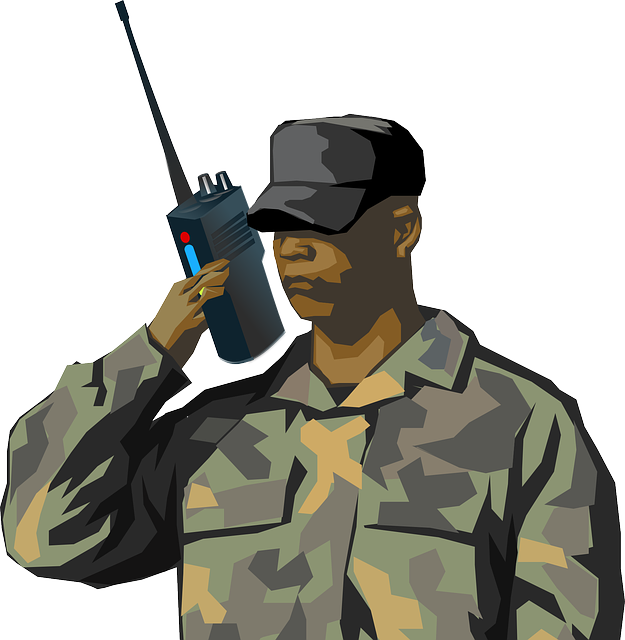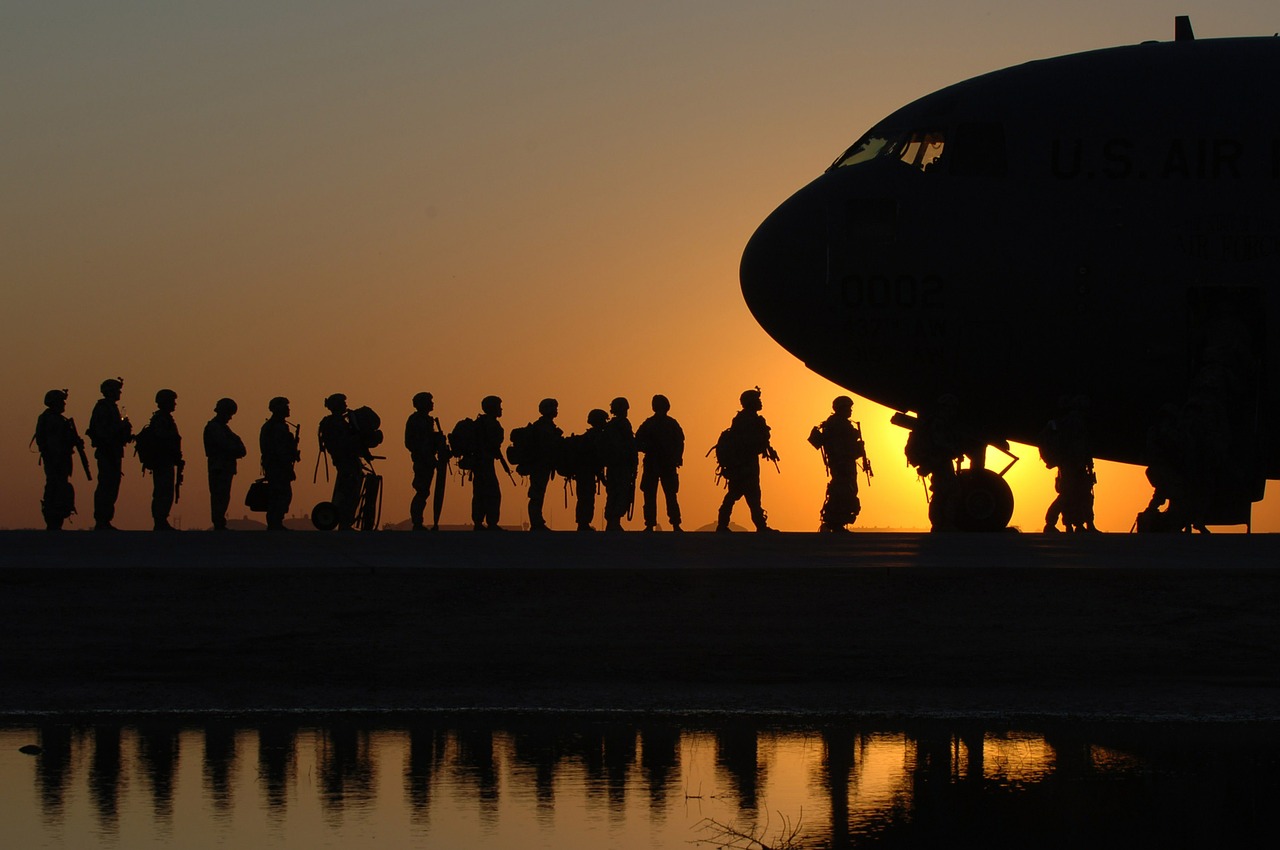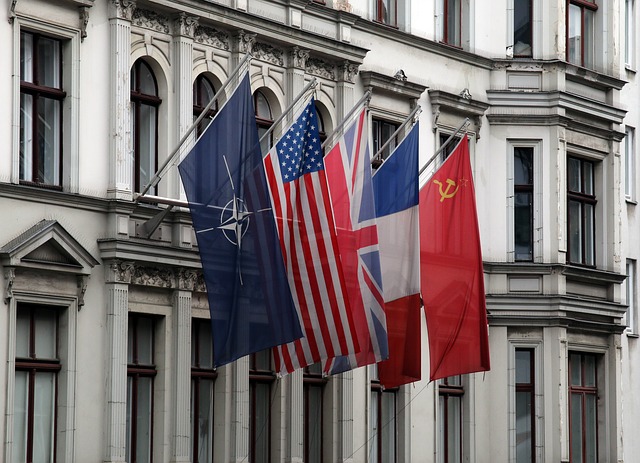The NATO Phonetic Alphabet: Spelling to Save Lives!
You may not think that spelling can be a life or death matter. But, the alphabets have actually been invented to avoid the fatal results that some spelling mistakes can have. Spelling alphabets are used to make radio messages as easily understood as possible especially by the military. The most prominent modern-day code is the NATO phonetic alphabet.
Let's consider a scenario.
Imagine that youâ™re on the ground in a military operation. You might even be behind enemy lines!
You receive orders to make your way to the extraction point: go to map grid DH98. But instead, your unit heads for BA98, having misheard the radio message.
Avoiding a critical situation like this is why we have phonetic spelling alphabets.
Youâ™ve probably heard spelling alphabets being used in movies and on TV.
You may have even visited a historical landmark which uses a spelling alphabet, like Checkpoint Charlie in Berlin. This marked the crossing between East and West Berlin during the Cold War. Officially called Checkpoint C.
The code word âCharlieâ was used to avoid confusion between different checkpoints. For Example, B, C, and D, all of which sound very similar, especially over radio communication.

Thus, comes a unified alphabet system that can minimize the chances of miscommunication - the NATO Phonetic Alphabet.
What is the NATO Phonetic Alphabet?
The NATO phonetic alphabet is an alphabet used specifically for spelling out voice messages.
More accurately known as the International Radiotelephony Spelling Alphabet (IRSA), or ICAO (International Civil Aviation Organization) alphabet.
Itâ™s the official one used by NATO allies to communicate when spelling out letters or digits. The alphabet was declassified by NATO and can be heard in both military and civilian situations.
Why Do We Need a Phonetic Alphabet?
Have you ever had problems spelling out your name or another message over the phone?
It's quite common that the person youâ™re speaking to can mishear you.
Many English letters sound very similar and they can be easy to mix up. Especially, when youâ™re not speaking face-to-face and lack the usual visual cues which help you interpret speech.
These issues are compounded in combat areas. Mostly because the soldiers may be faced with loud background noise, radio static or interference.
Letters like m and n, b and d, c and v sound so alike. One can easily misunderstand them over long-distance communication.
While this is merely annoying in civilian life, it can have fatal results in a military context.
A phonetic alphabet makes voice messages and letter combinations clear and easy to understand.
How Does It Work?
Instead of spelling out things like map coordinates with letters, military personnel substitutes a code word for each letter.
Map grid DH98, for example, becomes âDelta-Hotel-Niner-Ait.â
This makes communication clear and avoids confusion.
With just using letters and numbers, messages can easily be confusing.

The alphabet uses code words that correspond to the 26 letters of the English alphabet. These codes are acrophonical, meaning that each letterâ™s name (or in this case, code word), begins with the letter itself.
For example, the letter A corresponds to the codeword Alpha, B to Bravo, C to Charlie and so on.
Check out this 26 code words for the NATOÂ phonetic alphabet list in alphabetical order -Â
| The NATO Phonetic Alphabet Chart | ||
| Sl. No. | Letter | Nato Code |
| 1 | A | Alpha |
| 2 | B | Bravo |
| 3 | C | Charlie |
| 4 | D | Delta |
| 5 | E | Echo |
| 6 | F | Foxtrot |
| 7 | G | Golf |
| 8 | H | Hotel |
| 9 | I | India |
| 10 | J | Juliett |
| 11 | K | Kilo |
| 12 | L | Lima |
| 13 | M | Mike |
| 14 | N | November |
| 15 | O | Oscar |
| 16 | P | Papa |
| 17 | Q | Quebec |
| 18 | R | Romeo |
| 19 | S | Sierra |
| 20 | T | Tango |
| 21 | U | Uniform |
| 22 | V | Victor |
| 23 | W | Whiskey |
| 24 | X | X-ray |
| 25 | Y | Yankee |
| 26 | Z | Zulu |
Numbers also have their own particular assigned pronunciation for radio communication.
For example, 9 turns into niner and 5 is pronounced fifer, with an f instead of a v.
History of Spelling Alphabets
The current NATO phonetic alphabet is by no means the first of its kind.
The British and American militaries have been using their own locally invented code words for over a century now.

There are recorded spelling alphabets dating back to World War I. Back then, the British Armed Forces and the Royal Navy, in particular, used their own code words.
The Royal Navy used the official variant, with the letters A-E being represented by the words Apples, Butter, Charlie, Duff, and Edward.
Soldiers at the Western front used their own slang version, called âSignalese.â
Signalese had almost the same ideology behind it. But, the code words were different.
For example, Apples became Ack, Butter became Beer, and so on.Â
British armed forces changed to the RAF âTelephony Spelling Alphabetâ and continued to use that up until 1956.
However, they made continuous changes over the years.
Over time, Apples changed to Ace and then Able or Affirm. Butter changed officially to Beer and then was eventually replaced by Baker.
The RAF alphabet was very similar to the U.S. system at the time. The U.S. developed their own phonetic alphabet used in the 1940s and 50s.
Some of their code words were Able, Baker, Charlie, Dog, Easy and Fox.
Eventually, the alphabet became known as âAble Bakerâ after the first two letters!
Fans of Vietnam War movies like Platoon have probably heard the American characters referring to the Vietnamese as âCharlie.â
If youâ™ve ever wondered why exactly, itâ™s actually because the Viet Cong were referred to by the U.S. military as VC or âVictor Charlie.â
However, the soldiers used the shorter version - Charlie.
The Need for a Unified System - The Birth of NATO Phonetic Alphabet
The problem was that these alphabets were only intended to be used by people from the same nation, and couldnâ™t be used internationally.
The codes rely on English-centric words and needed to be more relatable to worldwide users.
The solution was the ICAO alphabet, which was tested by users from 31 countries so that people could communicate no matter where they came from.
Britain and America both changed to the ICAO in 1956 to facilitate communication between nations.
The first internationally recognized spelling alphabet was actually instituted by the International Telecommunication Union (ITU) in 1927.
NATO forces used the ICAO since 1956 before it was eventually de-classified and came to replace the original ITU alphabet.
The Fundamentals of the ICAO Code
The code words werenâ™t just chosen at random!
The goal was to make the code as much clear and easy to understand as possible. There must be thousands of words in the English language that start with A, B, and any other letter.
When selecting the final code words, hundreds of comprehension tests were performed to see which words were the easiest to understand over voice communication.

The code words had to be understood by people of 31 nationalities and heard not only in isolation but in the context of a message.Â
The word Football was most easily understood as an isolated word.
However, Foxtrot became the official code for the letter F. Because it had better results when used in an extended message.
Some other rejected code words include Nectar, which was replaced by November.Â
Similarly, Extra, which was substituted with X-ray after complaints that the original words were too hard to understand in poor radio conditions.
Code words have changed over the years, with experience fuelling improved word choices for maximum intelligibility. Â
Practical Uses in Modern Days
Military personnels have been using the phonetic alphabets for a hundred years, but theyâ™re also a major part of the aviation industry.
In fact, the ICAO alphabet was the creation of an aviation organization and air traffic controllers used it to communicate with pilots. Airlines also use it to communicate passenger name records.
Transport organizations in general use spelling alphabets to transmit codes, with the International Maritime Organization also contributing to the evolution of code words.
Medical professionals, law enforcement officials, banks or civilians who often need to talk over the radio or even telephone, like call center workers, for example, find a spelling alphabet useful at times.
Most often, civilians just make up their own code words as most people havenâ™t memorized the particular ICAO alphabet unless their profession demands it.
There are a few phonetic alphabets in use these days.
The ICAO may seem a bit too militaristic for civilian use. In that case, try the Western Union Phonetic Alphabet which uses more civilian-friendly (although very U.S. based) words like Adams, Boston, and Chicago.
Try the LAPD Phonetic alphabet if youâ™re a fan of TV cop shows like Starsky and Hutch, who called their car âZebra 3â instead of just âZ3.â
Final Words
Itâ™s not hard to find chances to use a phonetic alphabet in your daily life. If you have kids, teach them phonics (how to recognize letter sounds) by using the NATO phonetic alphabet, or better yet, help them make up their own code words!Â
Also, you should ask your kids to have a better grasp at these sight words as these are the most common words in the English language.Â
Websites like SpellQuiz.com can help you and your kids practice English spelling test by developing your awareness of phonics and the sounds associated with the letters of the alphabet. Try this vocabulary tester to understand your current skill level!
The next time you have to spell your name, or any other word for that matter, why not try using a few code words to get your message across clearly, as well as adding some fun into spelling?
Now you can take part in online Spelling Bee too! Check out the SBO section on Spellquiz today!
share now:
Spelling Tests per Grade


